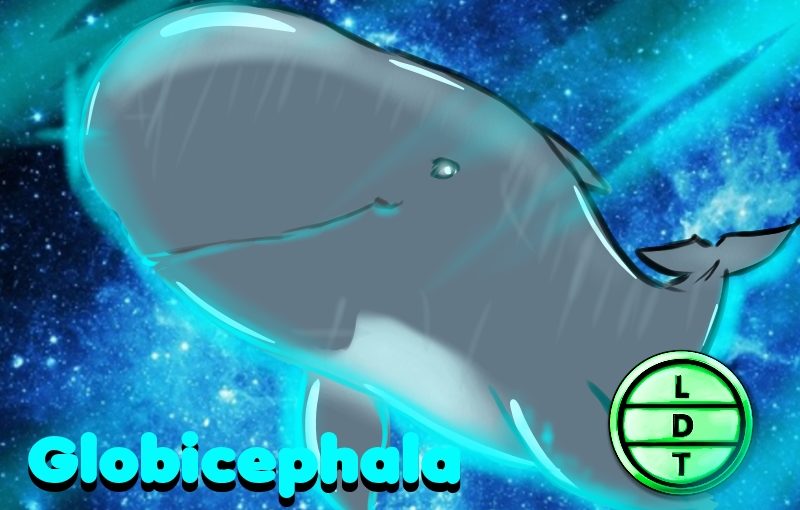“And today we are learning about a whale that’s as much a whale as they are Federal Aviation Administration approved pilots.”
Have you ever been sleeping? And during that sleep had a dream? And did that dream seem incredibly real? Well, you probably just ate too much sugar before bed, but this happens to the pilot whale all the time, and not because of late night snacks. Out sleeping cetaceous friend always sleeps with one eye open here in Life, Death, and Taxonomy.
Where Pilot Whales Live
They live in oceans all over the world. Prefer slightly cooler waters. Can be found all over in coastal waters.
Description
Pilot whales are dark colored porpoises, with light colored bellies and markings. Similar to small orcas. Bulbous heads with shorter noses than some dolphins.
Separated into long-finned and short-finned groups. Long-finned variety have slightly longer fins and more teeth. But this is as fluid as their habitat and it’s not always true, like the i before e rule.
Measure Up
Length – 6.5 m (21 feet) – How many Pilot whales go into the depth of the deepest part of the mariana trench? Hint: The deepest part of the ocean is called the Challenger Deep. Answer: 1,718 pilot whales
Weight – 2,300 kg (5,071 pounds) – How many pilot whales going into the max payload of an Airbus A300 (105,000 lbs./47,627kg)? Hint: An airbus A300 can carry it’s max payload 2,700 miles or 4,344 km. Answer: 21 pilot whales
Fast Facts
Pilot whales mostly squid but will also eat Atlantic cod, Greenland turbot, Atlantic mackerel, Atlantic herring, hake, and spiny dogfish. In places where squid are abundant, they won’t prey on the fish. They can dive for up to ten minutes without needing to come up for air. They can dive depths as much as 600 meters
Very active at low depths. Most deep diving mammals will move slowly at the limits of their depth to conserve air. Pilots will execute fast sprints and make calls, even during deep dives.
Pilot whales are highly social animals, and have social structures similar to Orcas. They live in pods of 10 to 30 but have been observed in groups of 100. They have close relationships with their mamas and stay in her pod for life.
They can be polygynous, which is when one male has several mates. Pods will aggregate and males will sire several calves in other pods. He will stay with a mate for a few months before returning to his own pod. Has to go home to mom. There is not much competition among males
Groups have three forms:
- Hunting – they form a long line that can stretch for more than a mile. Like a search party.
- Eating – they rarely move in any discernible formation, but may move in the same direction.
- Loafing – resting and mating
Beaching
Whales are so social it gets them into trouble. Pilot whales are known to be the most common stranders, beachers. Two possible explanations for this.
They may follow sick individuals that get stranded. One diseased whale will beach himself. So they don’t feel embarrassed, another whale might beach himself. Like it’s a cool new trend. Unfortunately, it catches on like it’s the late 90’s and the beach is selling Furbys.
Entire pods have been found beached next to each other as for solidarity. Another possibility is that their navigation is confused by the use of electromagnetic technology.

